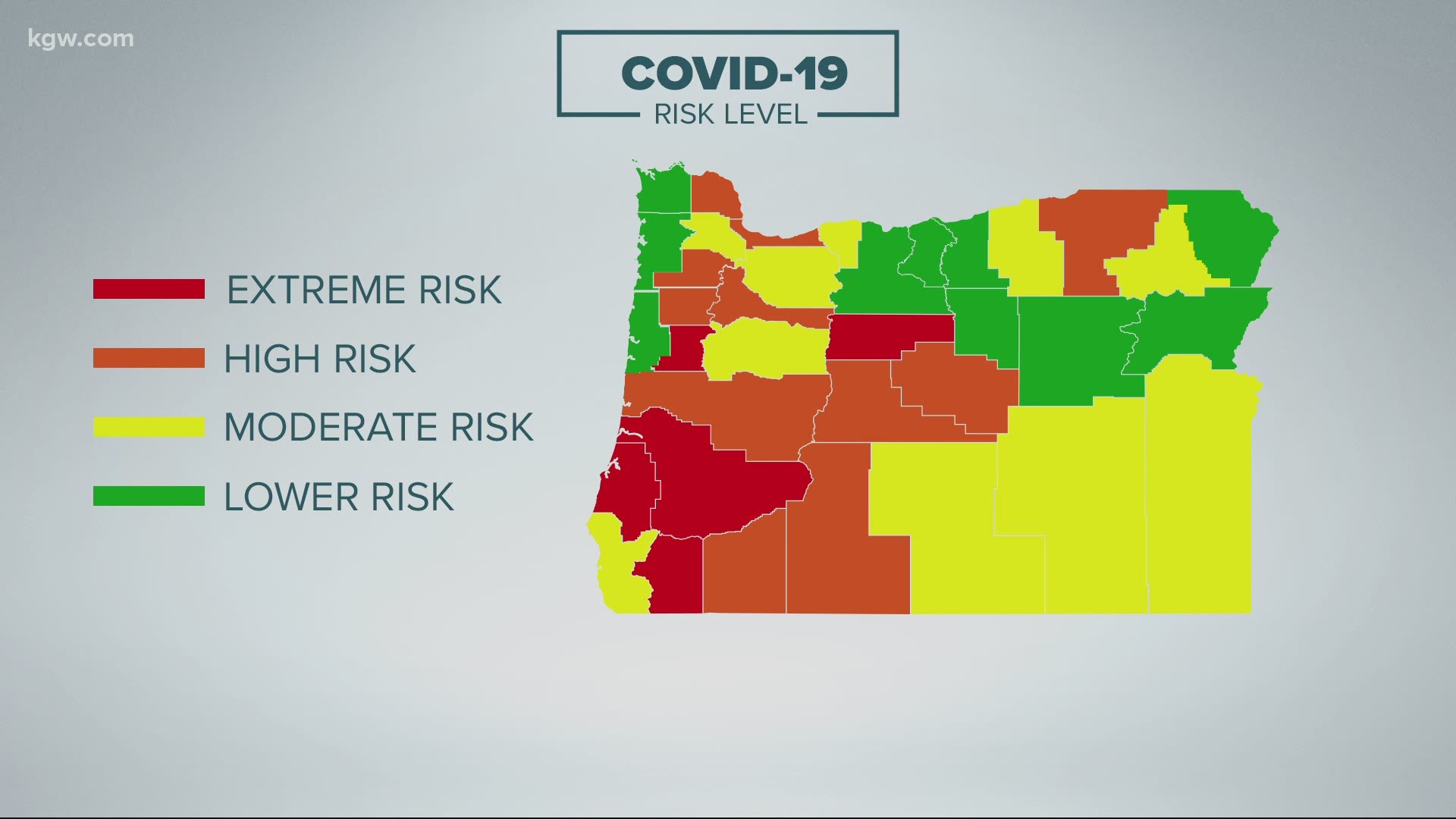PORTLAND, Ore — Only five Oregon counties remain in Oregon’s extreme risk level for COVID-19, Gov. Kate Brown announced Tuesday. The state’s new risk levels take effect Friday, Feb. 26.
Sixteen counties improved their risk levels, including two in the Portland metro area. Clackamas and Washington counties moved from high risk to moderate risk, which allows more people at indoor businesses such as restaurants and gyms.
Multnomah County remains at the high-risk level.
“For the second time in a row, we are seeing great progress in stopping the spread of COVID-19 across Oregon and saving lives," said Brown. "Oregonians continue to step up and make smart choices. While these county movements are welcome news, we must continue to take seriously health and safety measures, especially as more businesses reopen and we start to get out more.”
For the first time since fall, indoor dining will be allowed in the Salem area. Both Marion and Polk counties will move from the extreme risk category to the high risk designation beginning Friday.
Dr. Jennifer Vines is the lead health officer for the tri-county Portland region. COVID-19 case numbers have been trending downward around the state and in the metro region. While that is encouraging and it's what has lead to the easing of restrictions, Vines said the public needs to remain vigilant in stopping the spread of the virus.
"It’s the prevention paradox: Cases go down and people feel maybe a little bit more relaxed around their personal behaviors or some other choices that they make," Vines said. "And that can cause cycling of an increase and decrease in cases. We haven’t actually seen that very much in our area. People seem to really stick with the precautions, and I would encourage them to continue to do that."
The focus for public health is on easing restrictions, but not personal protections.
"What it’s doing now is buying us time to vaccinate, which is really the public health win here," Vines said. "And I think will really be our ticket to getting back to some sense of normalcy later this calendar year."
Under Oregon’s latest framework for coronavirus-related restrictions, counties are placed into four risk level categories: extreme risk, high risk, moderate risk and lower risk. The extreme risk designation comes with the strictest restrictions while the lower risk category comes with the least-restrictive rules. The Oregon Health Authority reassigns risk level designations to counties every two weeks, based on the latest data on COVID-19 spread.
Here’s the full list of county risk levels. Counties will remain at these risk levels from Feb. 26 to March 11.
Extreme Risk (5 counties)
- Benton
- Coos
- Douglas (Moved from High)
- Jefferson
- Josephine
High Risk (11 counties)
- Columbia
- Crook (Moved from Extreme)
- Deschutes
- Jackson (Moved from Extreme)
- Klamath
- Lane (Moved from Extreme)
- Marion (Moved from Extreme)
- Multnomah
- Polk (Moved from Extreme)
- Umatilla (Moved from Extreme)
- Yamhill (Moved from Extreme)
Moderate Risk (10 counties)
- Clackamas (Moved from High)
- Curry (Moved from Lower)
- Harney (Moved from Lower)
- Hood River (Moved from High)
- Lake
- Linn (Moved from High)
- Malheur (Moved from Extreme)
- Morrow
- Union (Moved from Extreme)
- Washington (Moved from High)
Lower Risk (10 counties)
- Baker
- Clatsop (Moved from High)
- Gilliam
- Grant
- Lincoln (Moved from High)
- Sherman
- Tillamook
- Wallowa
- Wasco (Moved from Extreme)
- Wheeler
Here's a look at which metrics determine the risk level for each county:
Read the full list of rules for each risk category below:

